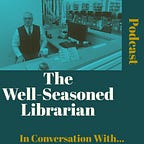Marmite-an English staple that is catching on in America.
I first discovered Marmite when I was stationed in England during the 1980s on an Air Force Base in an area near London. Enchanted with British foodstuffs I was determined to try everything I could get my hands on. Like many people who encounter Marmite for the first time I put far too much of it on my toast and was instantly both repulsed and attracted to the substance.
I was determined to crack the code. I spread it on toast in a thinner layer and it definitely tasted better. A layer of butter -then a dab of Marmite also tasted pretty good. Marmite and Peanut Butter was another hit, as was Marmite on Cheese. Marmite on British Cheddar is a perennial favorite of mine on fresh-baked bread.
What is Marmite? Marmite is, in essence, an edible spread to be used on toast, crackers or vegetables. It’s made from a yeast extract that is a by-product of brewing beer. It has a strong taste, unlike anything you might imagine. I have often likened it to Boullion, Worchester Sauce, or Soy Sauce — but all of these descriptions miss the mark. It is definitely a “Little dab 'll do ya” food.
The consistency of Marmite is sticky and unctuous dark brown paste that clings to the knife is spread with. While the consistency of Marmite likens itself to Peanut Butter, one would not be tempted to eat a spoon of it out of the Jar. None of these descriptors make it sound inviting — however despite my initial hesitation about it, I grew to love Marmite and over the years have become adept…
